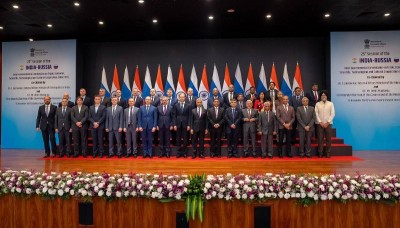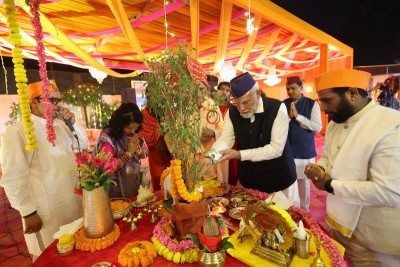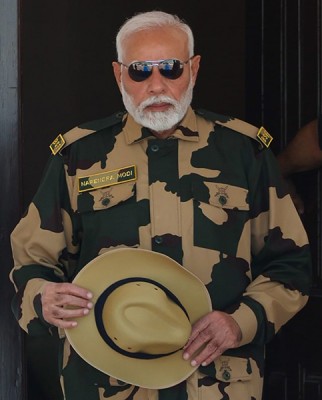
Glut of Drugs
On June 12, 2016, the Anti-Narcotics Force (ANF) conducted 11 operations and recovered a huge cache of narcotics weighing 1.16 tons worth PKR 7.6 billion in the Interntional Market. The seized drugs included 1.147 tons heroin, 17 kilograms of hashish and 2.4 kilograms of opium. ANF also arrested 12 persons, including four women, involved in drug smuggling during the operations. These operations were launched at Rawalpindi, Attock, Nowshehra, Peshawar, Hyderabad, Karachi and Pishin.
On June 6, 2016, ANF recovered 20 kilograms of heroin, 716 kilograms of hashish, 1.3 kilograms of methamphetamine and 4.8 kilograms of opium in 16 operations at Islamabad, Rawalpindi, Attock, Lahore, Multan, Dera Ismail Khan, Peshawar, Nowshehra, Karachi and Quetta. During the operations, ANF also arrested 21 persons, including three foreigners, while seven vehicles were seized. The value of seized narcotics was PKR 577 million in the international market
On May 31, 2016, ANF recovered 2.28 tons of narcotics worth ten billion rupees from different parts of the country. According to details, in six intelligence-based operations at Lasbella, Qilla Saifullah, Chaghi, Faisalabad and Gilgit, ANF arrested four accused including a woman and seized two loaded vehicles.
On May 26, 2016, ANF recovered a huge stash of narcotics from the Malir town area of Karachi, the provincial capital of Sindh. Acting on a tipoff, ANF conducted a raid and was able to seize 442 kilograms of charas and 13 kilograms of opium.
A report on the mid-year performance of the ANF revealed on June 14, 2016, that 49.12 tonnes of drugs, worth PKR 3.985 billion, had been recovered during the preceding six months. These included 2.233 tonnes of heroin, 33.248 tons of hashish, 7.703 tonnes of opium, 1.443 tonnes of morphine, 1.62 kilograms of cocaine, 931.87 kilograms of amphetamine, 6.085 kilograms of methamphetamine, 790 Ecstasy tablets and 28,550 Xanax tablets. During the period, 426 cases were registered and 506 drug criminals were arrested. These cases included 57 cases at airports and 11 cases of parcel consignments destined for receivers abroad.
A special Anti-Drug Drive was also launched in April 2016 with a particular focus on the educational institutions in Islamabad and all provincial Capitals, which helped ANF recover drugs worth PKR 1.17 billion in the international market. In this connection, 136 operations were conducted by ANF across Pakistan, resulting in the arrest of 155 drug suppliers and the seizure of 19 vehicles. During these operations, 1.344 tons of narcotics were recovered, including 44.726 kilograms of heroin, 1,274.775 kilograms of hashish, 23.150 kilograms of opium and 1.120 kilograms of cocaine. The majority of the operations were undertaken in Islamabad, Rawalpindi, Jhelum, Lahore, Attock, Haripur, Peshawar, Kohat, Multan, Gilgit, Sukkur, Karachi, Quetta and Qilla Abdullah.
A massive volume of drugs recovered from several parts of the country by the ANF, apparently accumulated over five years of seizures, from 2011-2015, was destroyed on April 18, 2016. Balochistan was on top of the list with 492 tons of drugs destroyed, with Sindh following with 111 tons. KP was in the third position with 91 tons; while 63 tons were discovered and destroyed in Punjab. Official sources indicate that larger amounts of narcotics were impounded in 2015, as against 2014. In 2015, more than 261 tons of narcotics were seized, while 123 tons were seized in 2014. 2013 saw 130 tons of narcotics' seizures, while 119 tons were seized in 2012.
Afghanistan is the world's largest opium producer, accounting for some 70 per cent (3,300 tons) of global opium production, according to the United Nations World Drug Report of 2016. The United Nations Office on Drugs and Crime (UNODC) Report 2015 said that 40 per cent of the drugs (heroin and marijuana) originating in Afghanistan are routed through Pakistan en route to China, the Gulf States, Africa, and Europe. According to the same report, there are anywhere between 300 and 500 heroin-producing factories operating in Afghanistan, mostly located in the provinces of Helmand and Nimroz near the border with Pakistan. There is no presence of the anti-narcotics department on the Pakistani side along these areas.
Media reports suggest that the drugs smuggled from Afghanistan to the Federally Administered Tribal Areas (FATA), KP and Balochistan are used by terrorist formations. An unnamed local journalist claimed, "The Restoril capsule is used by the local militants' organisations to energise their fighters and make them brave and bold for the missions," adding that the medicine is used to motivate young men to undertake suicide attacks. Sources claimed that several Afghan drug-peddlers and officials of the border posts and other agencies were involved in the business.
For long, in addition to extortion and kidnappings for ransom, the greatest source of income for terrorist groups based in KP, Peshawar and Frontier Region (FR) Peshawar has been the 'taxation' of narcotics. A confidential report prepared by law-enforcement agencies on May 19, 2014, noted, "International efforts to curb militants' access to foreign funds have forced such organisations to rely on criminal activities to cover their expenses." The report identified three terrorist groups working in and around Peshawar: Lashkar-e-Islam (LI) in Bara, Khyber Agency; Tariq Afridi group of Tehreek-e-Taliban Pakistan (TTP) based in FR Peshawar and Darra Adam Khel in FR Kohat; and Mohmand chapter of TTP based in the Mohmand Agency and the Kunar Province of Afghanistan. According to the report, LI was indirectly involved in the sale and purchase of narcotics and organised a hashishfair in Orakzai Agency three times a week. Similarly, drug transporters were 'taxed' by banned outfits in areas under their control. LI charged PKR 1,330 on a kilogram of hashish as 'tax', while another terrorist group, Amar Bil Maroof, popularly known as the 'Namdar group', charged PKR 100 per kilogram.
On December 9, 2014, United States (US) officials had pointed out that TTP could also be using drug money to finance its activities. "The logic is rather overwhelming. Drug traffickers have a substantial presence in the region where the Taliban (TTP) also operate," Dawn reported on December 9, 2014, while quoting an unnamed senior US official who was part of the delegation of Ambassador William R. Brownfield, Assistant Secretary of State for International Narcotics and Law Enforcement Affairs. "Obviously, TTP is earning revenue, when an illicit drug moves through their areas. We are almost 100 per cent certain that they are," the official added.
The claim was reinforced when TTP targeted Tehsildar (revenue official) Faramosh Khan, who was on an anti-poppy drive along with ANF officials and USAID campaigners in the Ambar Tehsil area of Mohmand Agency in FATA, when an Improvised Explosive Device (IED) device planted on the roadside exploded on March 1, 2016. The Jama'at-ul-Ahrar (JuA) faction of TTP claimed responsibilityThe two USAID campaigners were killed while Tehsildar Faramosh and an ANF official sustained injuries.
On February 18, 2016, two Police officers were shot dead by unidentified terrorists in the Machni area of Mohmand Agency in FATA.
Earlier, on 26 November 2012, Lance Naik Azad Khan was shot dead by unidentified assailants during an Anti-narcotics Operation in the Nullah area of Quetta, the provincial capital of Balochistan.
On 13 January 2011, Havildar Farooq Ahmed of the Quetta Regional Directorate, ANF, was shot dead by two unidentified assailants in the main bazaar of Panjgur town of Balochistan.
The involvement of Police officials in the drug trade has also been in evident. On February 19, 2016, for instance, the Special Branch of Sindh Police revealed that an Assistant Superintendent of Police (ASP), Bilal Qayyum, who was posted at Kiamari Town, Karachi, was found to be the ring leader of a drug dealing gang.
With the sheer volumes of drug movement within the country, drug addiction in Pakistan is at an alarming level. According to Dr. Darya Khan Leghari of Sir C.J Institute of Psychiatry, there are nine million drug addicts in Pakistan, out of which two million are in the age band of 15 to 25 years. Leghari asserted that drug abuse was growing rapidly, especially among youth, including those in colleges and universities, resulting in serious social and health implications. Almost five per cent of the adult population of the country is already addicted, putting Pakistan at the top of the list among countries affected by this scourge. Leghari claimed that the reason behind the alarmingly increasing number of drug addicts in Pakistan was that the drug cartels were fully backed and supported by powerful, wealthy and influential persons.
The situation appears to be even worse than Leghari suggests. The Senate Standing Committee on Interior and Narcotics Control was told on July 6, 2015, that around seven million people in Pakistan were drug addicts, and that 700 persons die every day in the country due to drug-related complications. The Committee, chaired by Senator Rehman Malik, was briefed by the Director General (DG) of ANF on the steps undertaken by the Narcotics Control Division for the welfare of those suffering from addiction.
Recognising the problem of the growing nexus between terrorists, drugs peddlers and their facilitators, Chief of the Army Staff (COAS) General Raheel Sharif declared on August 3, 2015, We will break the nexus between drug dealers, financiers and perpetrators of terrorism... We will not allow these drug barons to negatively influence and spoil our future generations."
The large volumes of drugs seized by state agencies, and the significant numbers of arrests, represent the tip of the iceberg in Pakistan. They would have little impact on the total volume of the trade as long as the roots of the problem in the Pakistan backed instability and terrorism across Afghanistan are not recognized, and the collusion of state entities and elites within Pakistan is not addressed.
Support Our Journalism
We cannot do without you.. your contribution supports unbiased journalism
IBNS is not driven by any ism- not wokeism, not racism, not skewed secularism, not hyper right-wing or left liberal ideals, nor by any hardline religious beliefs or hyper nationalism. We want to serve you good old objective news, as they are. We do not judge or preach. We let people decide for themselves. We only try to present factual and well-sourced news.







